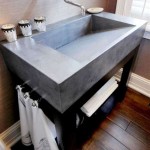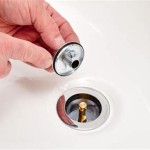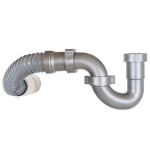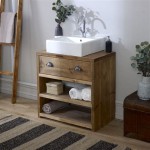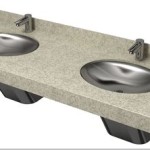Can Vinyl Plank Flooring Be Used In A Bathroom?
Vinyl plank flooring has become a popular choice for homeowners looking for durable, aesthetically pleasing, and cost-effective flooring solutions. Its versatility extends to various rooms within a house, but the question of its suitability for bathrooms is frequently raised. The bathroom environment presents unique challenges, primarily related to moisture and humidity, which can impact the longevity and performance of certain flooring materials. Understanding the properties of vinyl plank flooring and how it interacts with these challenges is crucial for making an informed decision.
The answer to whether vinyl plank flooring can be used in a bathroom is generally yes, but there are nuances and specific considerations. The key is to select the right type of vinyl plank flooring and to implement proper installation techniques. Not all vinyl plank flooring is created equal, and certain varieties are better equipped to withstand the demands of a bathroom environment than others. Furthermore, even the best quality vinyl plank can fail if not installed correctly, leading to water damage and other problems.
Understanding the Moisture Resistance of Vinyl Plank Flooring
One of the primary reasons vinyl plank flooring is considered a viable option for bathrooms is its inherent water resistance. Vinyl, unlike natural materials like wood or stone, is a synthetic material that does not readily absorb water. This characteristic makes it less susceptible to warping, swelling, and other forms of water damage that can plague other types of flooring in a high-moisture environment. However, it's important to differentiate between water resistance and being completely waterproof.
Many vinyl plank products, particularly those marketed as waterproof, offer a high degree of protection against spills and standing water. These products typically feature a core layer made of a waterproof material, often a composite of plastic and other materials. This core prevents water from penetrating the plank and damaging the subfloor beneath. However, even with a waterproof core, water can still seep through the seams between planks if the installation is not properly executed. This is particularly true with click-lock vinyl plank flooring, where a tight seal between planks is essential for preventing water intrusion.
Water-resistant vinyl plank flooring, on the other hand, offers a lower level of protection against water damage. While it can withstand splashes and spills for a limited time, prolonged exposure to moisture can lead to water absorption and potential damage. Therefore, water-resistant vinyl plank flooring is generally not recommended for bathrooms, where standing water and high humidity are common occurrences.
The type of vinyl plank construction also plays a role in its moisture resistance. Solid core vinyl plank flooring, also known as rigid core vinyl plank, is generally considered the most waterproof option. This type of plank features a dense, solid core that is highly resistant to water penetration. Other types of vinyl plank flooring, such as those with a foam core, may offer less resistance to moisture and are therefore less suitable for bathrooms.
Key Considerations for Selecting Vinyl Plank Flooring for a Bathroom
Choosing the right vinyl plank flooring for a bathroom involves considering several factors beyond just the material's water resistance. These factors include the type of construction, the thickness of the wear layer, the installation method, and the overall aesthetic appeal. A careful evaluation of these factors will help ensure that the selected flooring is both functional and visually pleasing.
The wear layer is a critical component of vinyl plank flooring that protects the underlying layers from scratches, stains, and other types of damage. A thicker wear layer provides greater protection and extends the life of the flooring. In a bathroom, where foot traffic is typically lighter than in other areas of the house, a thinner wear layer may suffice. However, it's still advisable to choose a wear layer that is at least 12 mils thick for added durability. For high traffic bathrooms, a wear layer of 20 mils or more is recommended.
The installation method is another important consideration. There are several methods for installing vinyl plank flooring, including glue-down, click-lock, and loose-lay. Glue-down vinyl plank flooring is generally considered the most waterproof option, as it creates a tight seal between the planks and the subfloor. However, glue-down installation can be more labor-intensive and requires a perfectly level subfloor. Click-lock vinyl plank flooring is easier to install but may be more prone to water intrusion if the seams are not properly sealed. Loose-lay vinyl plank flooring is the easiest to install but offers the least amount of water resistance and is not recommended for bathrooms.
The aesthetic appeal of the vinyl plank flooring is also an important factor to consider. Vinyl plank flooring is available in a wide range of styles, colors, and patterns, allowing homeowners to create a bathroom that reflects their personal taste. It's important to choose a style that complements the overall design of the bathroom and that is appropriate for a high-moisture environment. For example, textured vinyl plank flooring can provide a more slip-resistant surface, which is particularly important in a bathroom.
Proper Installation Techniques to Prevent Water Damage
Even the most waterproof vinyl plank flooring can fail if not installed correctly. Proper installation is crucial for preventing water damage and ensuring the longevity of the flooring. This includes preparing the subfloor, sealing the seams, and following the manufacturer's instructions carefully. Neglecting any of these steps can compromise the integrity of the installation and lead to costly repairs down the line.
Preparing the subfloor is the first and most important step in the installation process. The subfloor must be clean, dry, and level before installing the vinyl plank flooring. Any imperfections in the subfloor, such as cracks or bumps, should be repaired before proceeding. If the subfloor is not level, it can cause the vinyl plank flooring to buckle or warp over time. In bathrooms, it's also important to ensure that the subfloor is waterproofed to prevent moisture from seeping up from below.
Sealing the seams is another critical step in preventing water damage. Even with a waterproof core, water can still seep through the seams between planks if they are not properly sealed. For click-lock vinyl plank flooring, it's important to ensure that the planks are tightly locked together to create a secure seal. Some manufacturers recommend using a sealant or caulk to further protect the seams from water intrusion. For glue-down vinyl plank flooring, the adhesive itself acts as a sealant, but it's still important to ensure that the planks are properly aligned and that there are no gaps between them.
Following the manufacturer's instructions is essential for a successful installation. Each type of vinyl plank flooring has its own specific installation requirements, and deviating from these requirements can compromise the integrity of the installation. The manufacturer's instructions will provide guidance on the proper preparation of the subfloor, the correct installation method, and any specific precautions that should be taken to prevent water damage. Failing to follow these instructions can void the warranty and lead to costly repairs.
In addition to these steps, it's also important to consider the placement of the vinyl plank flooring around fixtures such as toilets and bathtubs. These areas are particularly prone to water damage, and extra care should be taken to ensure that the flooring is properly sealed around these fixtures. Using a waterproof caulk or sealant around the base of the toilet and bathtub can help prevent water from seeping under the flooring.
Regular maintenance is also crucial for preserving the longevity of vinyl plank flooring in a bathroom. This includes cleaning up spills promptly, avoiding harsh cleaning chemicals, and regularly inspecting the seams for any signs of damage. Addressing any issues promptly can prevent them from escalating into more serious problems.
In summary, while vinyl plank flooring can be a suitable choice for bathrooms due to its water-resistant properties, careful consideration must be given to selecting the right type of vinyl plank and ensuring proper installation. Choosing a waterproof variety with a thick wear layer, employing appropriate installation techniques, and implementing regular maintenance practices are all essential for maximizing the flooring's lifespan and preventing water damage. The inherent properties of vinyl make it a popular choice, but the execution determines its success in the challenging bathroom environment.

Vinyl Planks In Bathrooms Residential Inspiration Flooring

Can Vinyl Flooring Be Used In A Bathroom Hallmark Floors

Dos And Don Ts For Installing Vinyl Plank Floors In The Bathroom Advice Homeowners

Luxury Vinyl Flooring Is A Great Choice For Chic Bathrooms

Bathroom Flooring Pros And Cons

Is Vinyl Plank Flooring Waterproof Twenty Oak

Installing Vinyl Plank Flooring Lifeproof Waterproof Rigid Core Sustain My Craft Habit

Dos And Don Ts For Installing Vinyl Plank Floors In The Bathroom Advice Homeowners

Installing Vinyl Plank Flooring Lifeproof Waterproof Rigid Core Sustain My Craft Habit

How To Install Vinyl Plank Flooring In A Bathroom Fixthisbuildthat
